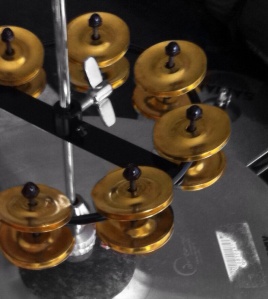Wikipedia defines jazz thus: “a genre of music that originated in the Southern United States as a combination of European harmony and forms with African musical elements such as blue notes, improvisation, polyrhythms, syncopation and the swung note.”
It would be hard to beat that as a description of a world sprung from inclusiveness and diversity. But as the scope and influence of jazz broadened, so its mainstream image seemed concomitantly to narrow. Soul, disco, swing, blues – all these have a clear (if not exclusive) black identity. But jazz? To many, the word conjures up visions of thin white men wearing Van Dyke beards and black rollnecks who play ever-decreasing variations on the same theme through spirals of their own cigarette smoke and engage no-one but themselves.
However, the recent evidence of my own eyes suggests that this über-nerd image is itself an outdated and inaccurate cliché. It may have its origins in the fact that it often takes white men to catch the attention of other white men. It’s not hard to see how a positive feedback loop could develop.
July saw the coming of the annual Manchester Jazz Festival. I spent two sunny afternoons lounging around Albert Square armed with a nice cocktail, some graph paper and a bunch of my daughter’s crayons. My aim was to conduct some basic demographic research about who is playing and who is watching jazz in 21st century Manchester. If I happened to hear some darned fine music at the same time, well, it was a dirty job but I powered through.
Extensive preliminary fact-finding (i.e. a couple of quick google searches) told me that the Greater Manchester area has an approximate white to non-white ratio of 9:1 and a pretty even male-female split. Over the course of two afternoons, I saw four bands comprising a total of twenty musicians. I also sampled the audience. Every time I moved from pavilion to bar to general-milling-about-area, I looked at the ten people nearest me.
The audience was joyfully diverse. Of the seventy people I surveyed, just over half were women and a quarter were not white. There was also a surprising number of children who didn’t even seem to have been dragged there under sufferance. It seems that appreciation of jazz is certainly not restricted to any one group. I was also not the only person taking notes.
The musicians presented a slightly different aspect though. Of the twenty, all were white and nineteen were men.
This was not the result I expected (nor, frankly, wanted). I can’t draw any hard conclusions from it, of course I can’t. It’s a single tiny set of very crude data, still thoroughly enmeshed in all its confounding factors. I’m well aware that the Festival involved men and women from all sorts of different backgrounds that I didn’t happen to come across.
Nonetheless, one begins to see, perhaps, how the image of the thin white jazzman endures.

Reblogged this on msamba.
Thanks!